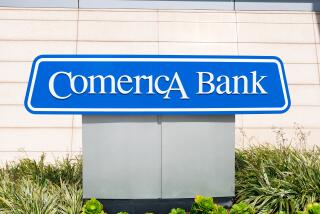Cost of S&L; Rescue Soaring, Study Says : Latest Estimate by FDIC Shows a 30% Increase in 6 Months
- Share via
WASHINGTON — The cost of bailing out insolvent thrift institutions had soared to $68.9 billion by midyear, a 30% hike over what it would have cost at the end of 1987, a new study made public Monday by the Federal Deposit Insurance Corp. estimated.
FDIC, which insures deposits at commercial banks, said the cost could be significantly lower if assisted mergers can be arranged with healthy institutions. But it could also be higher if there are losses on thrifts’ substantial holdings of residential mortgages and mortgage securities.
In addition to 133 savings and loans that were liquidated or merged at a projected cost of $22.1 billion in the first half of the year, FDIC estimated that an additional 338 insolvent, unprofitable thrifts had balance-sheet losses of $46.8 billion at the end of June.
The combined total of $68.9 billion outstrips the Federal Home Loan Bank Board’s projection on Oct. 5 that it will cost $45 billion to $50 billion to resolve the crisis in the thrift industry.
Secretary of State-designate James A. Baker III has said that President-elect George Bush will not use taxpayers’ money to bail out sick thrifts, whose problems are currently being resolved by the Federal Savings and Loan Insurance Corp., the arm of the bank board that insures thrift deposits.
Lacks Closing Funds
But FDIC’s figures suggest that the crisis is rapidly getting worse and that the longer the sick thrifts are kept open, the bigger the bailout bill for government and the savings and loan industry will be.
FSLIC, with about $7 billion a year in cash, does not have the money needed to close down every ailing thrift even if it chose to do so.
At the end of 1987, 489 thrifts had combined balance-sheet losses of $52.8 billion, equivalent to 25.3% of assets, FDIC said.
Three months later, the losses had climbed to $63.3 billion, representing 28.4% of assets, and by mid-year the figure had reached $68.9 billion, or 30.6% of assets.
At the end of 1985, by comparison, it would have cost $19.5 billion to close down the 310 thrifts that were then insolvent and unprofitable, FDIC estimated.
By the end of 1986, 394 thrifts were sick and the projected bailout cost had reached $37 billion.
FDIC said it arrived at the figures by applying its formula for estimating the cost of bank failures to the financial reports that savings and loans submit to the bank board.
It adjusted the formula by assuming that thrifts would not lose money on their residential mortgages and pass-through securities because credit losses on those assets tend to be relatively low. FDIC also assumed that intangible assets such as good will and deferred losses were worthless.
More Detailed Estimate
FDIC is experienced at handling bank failures, but it said the applicability of the formula to savings and loans is unknown and it did not have access to the bank board’s examination data.
A spokesman for the bank board said its $45 billion to $50 billion estimate was more detailed than FDIC’s because it was based on careful scrutiny by its examiners.
Moreover, the economy in Texas, where most of the ailing thrifts are, is showing signs of picking up.
“This is a pretty definitive estimate at this point. But we’re not saying it’s locked in concrete,” the spokesman said.
More to Read
Inside the business of entertainment
The Wide Shot brings you news, analysis and insights on everything from streaming wars to production — and what it all means for the future.
You may occasionally receive promotional content from the Los Angeles Times.










